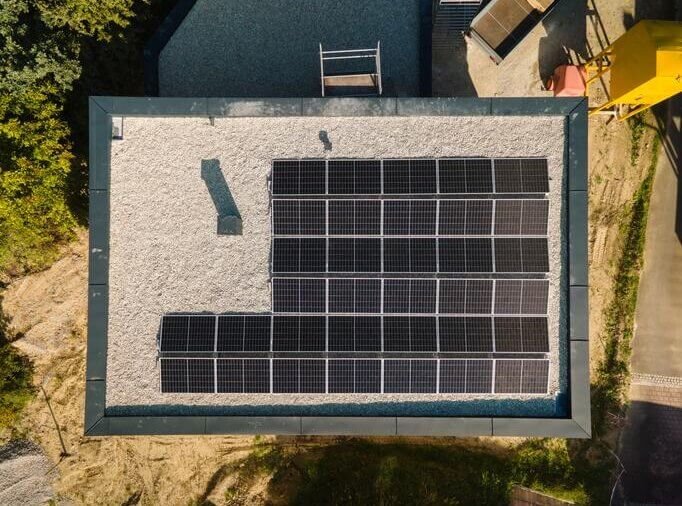Flat roofing is a popular choice for commercial buildings, industrial facilities, and even some residential properties. Known for its sleek appearance, easy accessibility, and cost-effectiveness, flat roofing provides a distinct set of advantages and some unique considerations compared to traditional sloped options. Here’s a closer look at what this unique exterior is, its benefits, materials, and why it’s a preferred option for many property owners.
What is Flat Roofing?
A flat roof is a roof that has a slight slope, typically less than 10 degrees, which gives the appearance of a surface. While completely level varieties are rare, these are designed with just enough incline to allow for water drainage. Instead of water running off quickly as it does with slopes, flat roofs rely on drainage systems and slight gradients to direct water toward drains or gutters, preventing pooling and potential damage.
Types of Flat Roofing Materials
Several types of materials are commonly used in flat roofing systems, each with its unique benefits:
Built-Up Roofing (BUR)
Also known as “tar and gravel” roofs, BUR systems are made up of layers of asphalt and fabric materials (called ply sheets), topped with gravel or mineral granules. This option is highly durable and resistant to weathering, providing excellent protection against UV rays.
Modified Bitumen
This material combines asphalt with rubber or plastic polymers to create a more flexible and durable surface. Modified bitumen roofs can be installed in single or multiple layers and are often torch-applied or adhered with cold adhesives.
EPDM (Ethylene Propylene Diene Monomer)
EPDM is a synthetic rubber membrane that’s durable, flexible, and resistant to UV radiation. It’s commonly used for commercial flat roofs and is one of the most cost-effective options.
TPO (Thermoplastic Polyolefin)
TPO is a single-ply roofing membrane made of a blend of polypropylene and ethylene-propylene rubber. Known for its energy efficiency and resistance to punctures, TPO is a popular choice, particularly in warmer climates.
PVC (Polyvinyl Chloride)
PVC is another single-ply membrane with excellent resistance to chemicals, fire, and extreme weather. It’s commonly used for commercial roofs and offers strong durability, though it’s typically more expensive than other materials.
Advantages of Flat Roofing
Flat roofing offers a range of advantages that make it ideal for certain types of buildings and climates:
Cost-Effectiveness
Flat roofs typically require less material and labor compared to sloped options, making them a more affordable option. The streamlined design can also reduce maintenance costs over time.
Ease of Access
Flat roofs are easier to access for maintenance, repairs, and even for placing equipment like HVAC units, which are commonly housed on commercial exteriors. This accessibility can also simplify inspections, saving time and costs.
Versatile Usage
Flat roofs provide extra usable space for various purposes, such as creating patios, installing solar panels, or even establishing green areas. This versatility adds functional value to a property, particularly in urban areas where outdoor space may be limited.
Energy Efficiency
Flat roofs can be highly energy-efficient, especially when paired with reflective materials or green systems. Reflective materials can help reduce indoor temperatures by reflecting sunlight, potentially lowering cooling costs during hot months.
Considerations for Flat Roofing
While flat roofs have many benefits, they also come with specific considerations:
Drainage Needs
Because water doesn’t run off flat roofs as quickly as it does on sloped ones, drainage is crucial. Without proper drainage, water can pool, potentially leading to leaks and damage. Regular maintenance to keep drains clear is essential.
Durability
Flat roofs are exposed to more direct sunlight, which can lead to faster wear and tear. Choosing the right materials and installing a high-quality membrane is critical to ensure a longer lifespan.
Insulation Requirements
Flat roofs can lose or absorb more heat depending on the materials used. Proper insulation is necessary to maintain energy efficiency, especially in regions with extreme temperatures.
Is Flat Roofing Right for You?
Flat roofing is an excellent choice for commercial properties and can also work for residential spaces when aesthetics, accessibility, and cost are top priorities. By choosing the right materials, planning for drainage, and maintaining your exterior regularly, you can enjoy the benefits while minimizing potential challenges.
Work with the Best in Flat Roofing
Flat roofing is a practical, efficient, and versatile option that suits a variety of building types. Whether for a commercial or residential property, understanding the basics—such as the materials and maintenance needs—will help you make an informed choice and get the most out of your investment. With the right care, a flat roof can provide excellent protection, energy savings, and even extra functional space for years to come.








